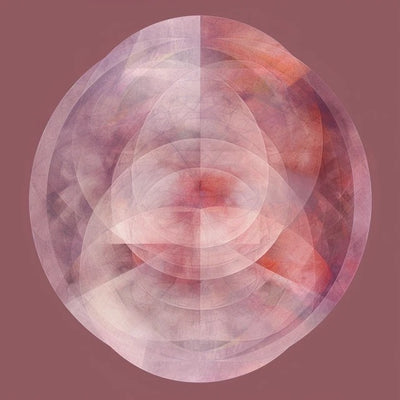An In-Depth View Of The Menstrual Cycle
When it comes to learning about our bodies, most women were taught about periods. In brief, (which it usually was), we were told we would bleed once a month and would need to use pads or tampons to soak up our menstrual blood. If we were lucky, we would learn that sometimes feelings of moodiness and cramps can alert us that our period is near.
The menstrual cycle is so much more than our period. Yet, rarely are we given any insight into our menstrual cycle beyond the bleeding. Even then, there is much mystery over what our bleeding means, such as the color, duration, spotting, flow, and consistency.
Most health care providers divide the menstrual cycle into three phases:
- Follicular (before an egg is released)
- Ovulatory (the event where the egg is released)
- Luteal (the time after the egg is released before menstruation)
You may also see some information that suggests there is a fourth phase - the menstrual phase. Either way of thinking about it is fine, but the menstrual phase is usually considered part of the follicular phase because of what your hormones are doing.
Let’s take a deep dive into the three phases of the menstrual cycle and highlight the changes you can expect in your hormones.
The Follicular Stage
This stage begins on the first day of your menstrual period. The main event of this phase is the development of follicles (which each contain an egg) within the ovaries. The follicular phase lasts about 13 or 14 days, but among all of the phases, this phase has the greatest variety in duration among women. Also, when women enter perimenopause, this phase starts to shorten in length.
Menstruation - The Starting Point
The full menstrual cycle starts on the first day of your period and ends with the start of your next period. This is also the first day of the follicular phase. A period is where the inner lining of your uterus (endometrium) sheds blood, tissue comprised of endometrial cells, and mucous. Most periods last between 5-7 days, but there is a lot of variety in duration.
Throughout the cycle, your uterine lining builds up to prepare to host a possible pregnancy. A fertilized egg implants in the thickened uterine lining, which provides nourishment and protection during the first stages of pregnancy.
What your hormones are doing
During the follicular phase, estrogen and progesterone levels are very low. When these hormones drop, your uterine lining is signaled to breakdown and shed. However, follicle-stimulating hormone (FSH) starts to rise to stimulate the ovaries to prepare new follicles for potential fertilization. FSH is released by the pituitary gland in your brain to help signal the ovaries. Luteinizing hormone (LH) starts to steadily rise as well to help prepare for ovulation.
During this phase, the uterine lining starts to thicken again once your period has stopped. This is called the proliferative phase.
The Ovulatory Stage
This stage is the shortest of all, lasting only between about 16-32 hours. It ends once the egg has released from the follicle.
Although several follicles are helped to maturity during the follicular phase, only one (usually) is made dominant. The dominant follicle then ruptures, releasing the egg into the fallopian tubes for fertilization. Once an egg is released, it can only be fertilized for about 12 hours after its release.
Hormones
The reason the follicle bulges and ruptures is because estrogen levels become high enough to cause an LH surge at the start of the ovulatory phase. The LH surge can be detected with a urine test, so women will sometimes take a urine test to assess for ovulation if they wish to get pregnant. That being said, most pregnancies occur from intercourse that occurred up to 3 days before the actual ovulation, as the sperm need to be waiting in the fallopian tubes.
Some women can also feel a dull pain on one side of the abdomen during ovulation called mittelschmertz. It is usually random which ovary gets to release an egg during fertilization.
During this phase, progesterone levels start to steadily increase. FSH also increases slightly during the ovulatory phase, although the reason for this increase is not well understood.
Note → Just because you have a period, does not mean you are ovulating. A cycle without ovulation is called an anovulatory cycle and can occur in girls who are just starting their period (menarche) and women in menopause. Irregular periods and other health conditions (like polycystic ovarian syndrome) can also lead to anovulatory cycles.
The Luteal Phase
The final phase of the cycle is the luteal phase, which is focused on increasing progesterone levels and thickening the uterine lining and cervix.
Once a follicle ruptures and releases an egg, the follicle remains behind in the ovary, becoming the corpus luteum. The corpus luteum produces progesterone, which remains high throughout the latter half of the cycle. If conception does not occur, the corpus luteum begins to disintegrate about 10 days after ovulation. Thus, at the end of the luteal phase progesterone levels (and estrogen too) fall which stimulates the start of a period.
Hormones
During the majority of this phase, estrogen and progesterone levels are high. These two hormones work to help support a possible pregnancy by:
- Increasing the thickness of the endometrium (which provides nourishment and fluids)
- Thickens cervical mucous to prevent sperm and bacteria from entering the uterus
- Increases your body temperature slightly (some women monitor their temperature throughout their cycle as a way to see if they had an ovulatory or anovulatory cycle)
- Dilates the milk ducts in the breasts, which can make them feel more swollen and tender
Simultaneously, LH and FSH levels are low until the start of the next menstrual cycle.
The menstrual cycle is a fascinating, rhythmic part of womanhood. And, the changes in our hormones during the cycle can cause more than just thickened endometrial linings and ruptured follicles. Our whole body and mind can respond to these hormone changes, which can lead to both positive and challenging effects. Challenge yourself by tuning into your body during your next cycle and journal your symptoms, emotions, and habits to see how your body uniquely responds to the changes occurring at the molecular level.
Julia Walker, RN, BSN is a women’s health nurse and advocate. She is a member of the perry team. perry is a social network for women in perimenopause - connecting & supporting like-minded warriors in the same stage of life. The community offers a safe space for women to feel understood, unite and tap into knowledge and resources from menopause experts.
Disclaimer: This is not medical advice, does not take the place of medical advice from your physician, and is not intended to treat or cure any disease. Patients should see a qualified medical provider for assessment and treatment.














